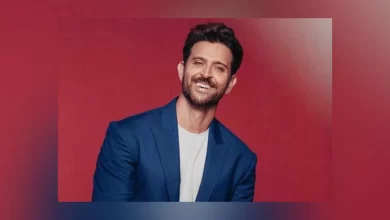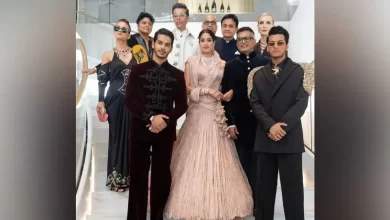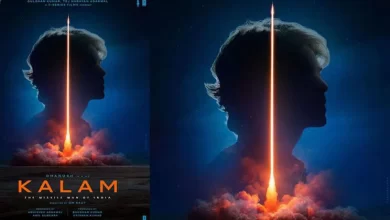Pathaan’s success is India’s answer to hate, a love letter to Shah Rukh Khan

Shah Rukh Khan in a still from Pathaan.
In the most meta moment in Pathaan, which is perhaps the meta-est film Shah Rukh Khan has done, he and another superstar of his era (let’s call him Bhaijaan) accept their age. They are sore and aching, a strip of painkillers has exchanged hands, and both know that 30 years is enough time to establish a lasting legacy. “Who next?” is the question on their minds as they dismiss one heir apparent after another.
We, as the audience, sport a big smile on our faces, but also shift uncomfortably in our seats. We have had that exact same discussion – inside our homes, on Twitter and sometimes on the pages of newsprint. We have written their epitaphs, signed off on their professional eulogies and accepted that the era of superstars is over. They are the last of a dying breed and time is running out for them. Tick-tock, tick-tock.
In this deliciously entertaining scene shot on a destroyed railway bridge where machismo and vulnerability meet, they wink at us and say, ‘We know what you think, and you are wrong. We are far from over.’ As they stand up, all creaking bones and tender joints at that moment, SRK puts it in words, ‘bachchon pe nahi chhod sakte (can’t leave it to kids)’.
The theatre erupts once again, the Badshah has proved them wrong and they can’t be happier. The film is filled with such self-aware moments where the actor and his comeback character bleed into one, he lets the wounds that were inflicted on him over the past few years show and then shrug them off.
For a film that is one action set-piece after another – on trains and with jetpacks, on arctic ice shelves and on top of trucks in cities with skyscrapers – it is these meta moments that you will remember and take home with you. The car chases, the swerving helicopters (this film sure loves its choppers) and the whizzing bullets, enjoyable as they are, are left behind in the velvety darkness of the theatre. The action pieces – so frequent that they can cause tedium – are, however, a discussion for another day, and another piece.
This time, let’s focus on the Badshah and him alone. Shah Rukh, all rippling muscle, pecs and eight-pack, overpowers the screen. He seems bigger, he feels bigger. Even a generation that grew up with Raj-Rahul has no trouble accepting him as the man who can break your spine into two with as much ease as he can romance you with those liquid eyes. It wouldn’t have been easy to transition into an action star at 57, but his romance with us has seen its fair share of ups and downs – more downs than ups – over the last decade. Of late, underwhelming films that tried to ride out purely on his superstardom had made his core audience ask him for some time apart. It was not as much a break as a chance to recalibrate the relationship, rethink the choices.
In these four years, distance made hearts grow fonder. Despite all the talk of transformation, Shah Rukh didn’t change in Pathaan as much as he evolved – he retains what he stands for and then makes it better. The eight-packs are easy on the eye, as is the rugged exterior with a gooey heart of chocolate beneath it. ‘Humein laga Pathaan mar gaya par woh to nayi kitab likh raha tha (We had written off Pathaan, but he was writing a new chapter),’ a character establishes about Shah Rukh Khan 3.0 early on in the film.
Pathaan is smart enough not to break the image of what SRK represents to India, but to build upon it – inclusivity, an innate sense of humanity and the belief that if you so desire, you can move mountains.
Pathaan wears its patriotism on its sleeve but it is not the kind that orders, ‘Andar ghus ke maarna(we will enter your home and attack)’, it is the one where you ask, ‘What can you do for your country?’. In gentler times, the same question was posed by Mohan Bhargav of Swades and Kabir of Chak De! India. ‘Ek soldier ye nahi poochta ki desh ne uske liye kya kiya, puchta hai ki woh desh ke liye kya kar sakta hai (a soldier doesn’t ask what the country can do for him, he asks what he can do for the country),’ he tells both to the man opposite him and to us in the audience, never letting go of our gaze. The ‘Jai Hind’ that follows is not him proving his allegiance, it is telling the haters that the right to love the motherland is not limited only to the majority.
The film is as much an answer to the vitriolic hate he has received in the last few years in a largely polarised country as it is a gesture of faith to those who love him. ‘Khauf logon ko andha kar deta hai (fear blinds people),’ he explains, perhaps talking about the fear of the ‘other’ which has been colouring the hate against him. He is himself, despite the name Pathaan, a man with no religion. Found inside a movie theatre (can a backstory be more cinematic than that), he got a name and identity purely out of love.
Those wondering whether people swaying in the aisles of theatres and lining up to watch the shows of the film are mere narratives stitched together by PR units should perhaps understand the appeal of Shah Rukh. He stopped being a celebrity a long time ago, now he is an emotion that transcends the religious and cultural boundaries that detractors want to bind us all in. He is the reminder of an inclusive country, a survivor who doesn’t save anything for the swim back. He is all in, and so are we. Pathaan’s success is not just about some empty box office figures, it says as much about the man at its heart as it does about the country lining up to watch him. They are proof of India saying that 30 years on, this love affair is far from over.







